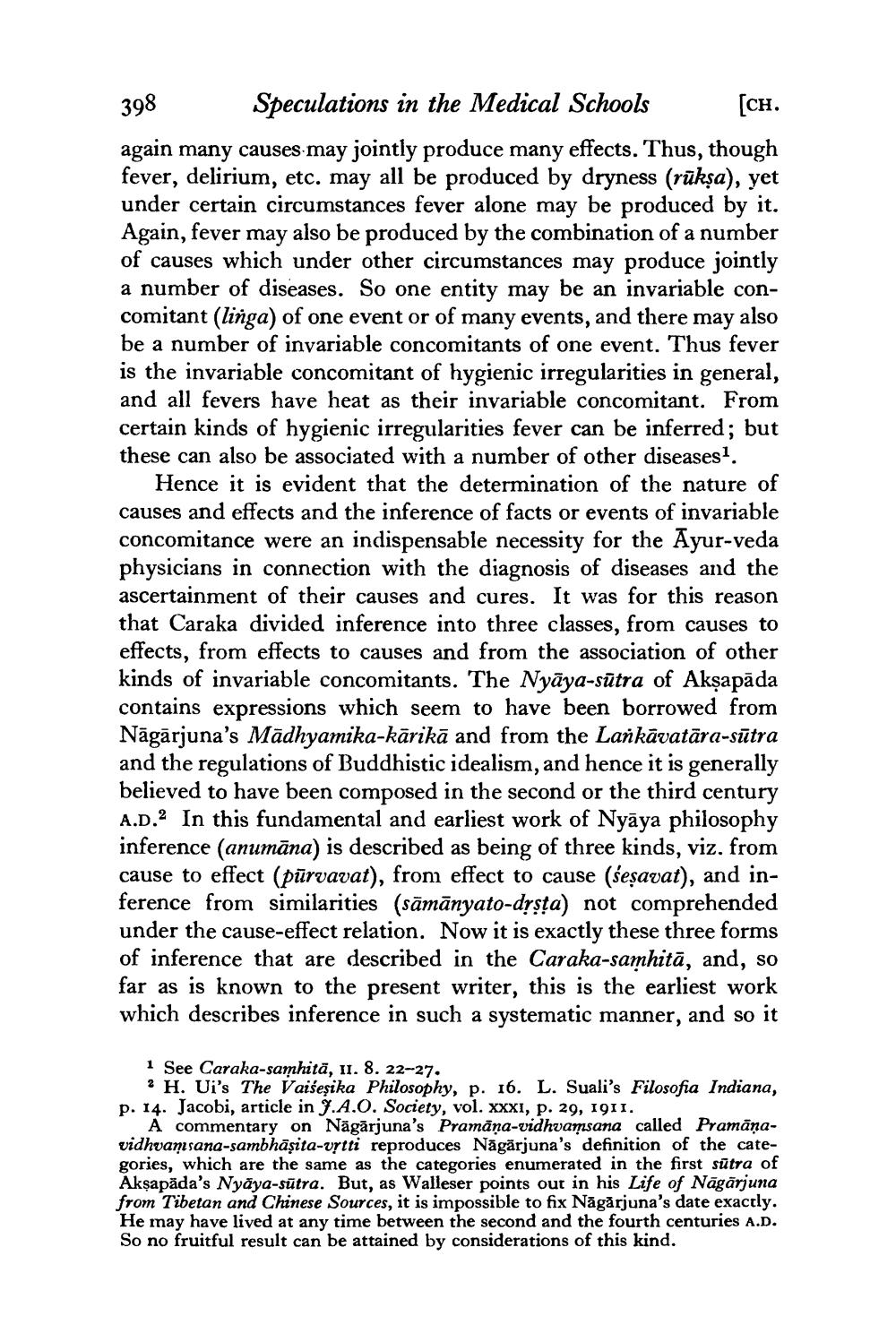________________
398
Speculations in the Medical Schools [CH. again many causes may jointly produce many effects. Thus, though fever, delirium, etc. may all be produced by dryness (rūkņa), yet under certain circumstances fever alone may be produced by it. Again, fever may also be produced by the combination of a number of causes which under other circumstances may produce jointly a number of diseases. So one entity may be an invariable concomitant (linga) of one event or of many events, and there may also be a number of invariable concomitants of one event. Thus fever is the invariable concomitant of hygienic irregularities in general, and all fevers have heat as their invariable concomitant. From certain kinds of hygienic irregularities fever can be inferred; but these can also be associated with a number of other diseases?
Hence it is evident that the determination of the nature of causes and effects and the inference of facts or events of invariable concomitance were an indispensable necessity for the Ayur-veda physicians in connection with the diagnosis of diseases and the ascertainment of their causes and cures. It was for this reason that Caraka divided inference into three classes, from causes to effects, from effects to causes and from the association of other kinds of invariable concomitants. The Nyāya-sūtra of Akşapāda contains expressions which seem to have been borrowed from Nāgārjuna's Mādhyamika-kārikā and from the Lankāvatāra-sūtra and the regulations of Buddhistic idealism, and hence it is generally believed to have been composed in the second or the third century A.D.2 In this fundamental and earliest work of Nyāya philosophy inference (anumāna) is described as being of three kinds, viz. from cause to effect (pūrvavat), from effect to cause (seșavat), and inference from similarities (sāmānyato-drsţa) not comprehended under the cause-effect relation. Now it is exactly these three forms of inference that are described in the Caraka-samhitā, and, so far as is known to the present writer, this is the earliest work which describes inference in such a systematic manner, and so it
1 See Caraka-samhitā, 11. 8. 22-27.
? H. Ui's The Vaiseșika Philosophy, p. 16. L. Suali's Filosofia Indiana, p. 14. Jacobi, article in J.A.O. Society, vol. XXXI, p. 29, 1911.
A commentary on Nāgārjuna's Pramāņa-vidhvamsana called Pramanavidhvamsana-sambhāṣita-vrtti reproduces Nāgărjuna's definition of the categories, which are the same as the categories enumerated in the first sūtra of Akşapäda's Nyāya-sūtra. But, as Walleser points out in his Life of Nāgārjuna from Tibetan and Chinese Sources, it is impossible to fix Nāgārjuna's date exactly. He may have lived at any time between the second and the fourth centuries A.D. So no fruitful result can be attained by considerations of this kind.




